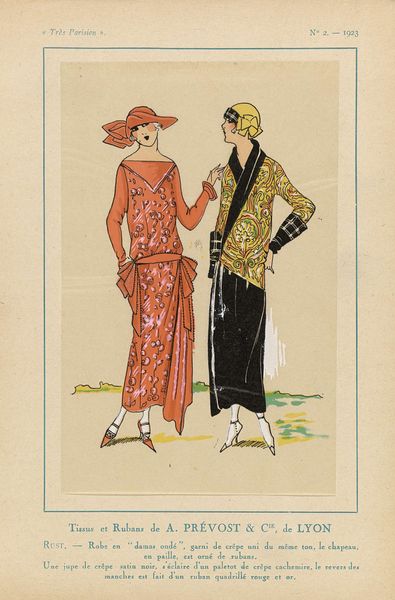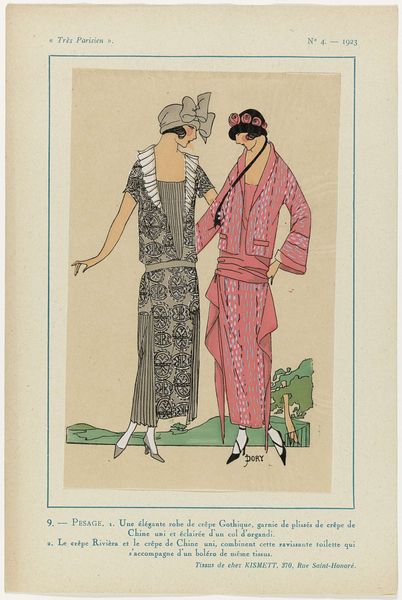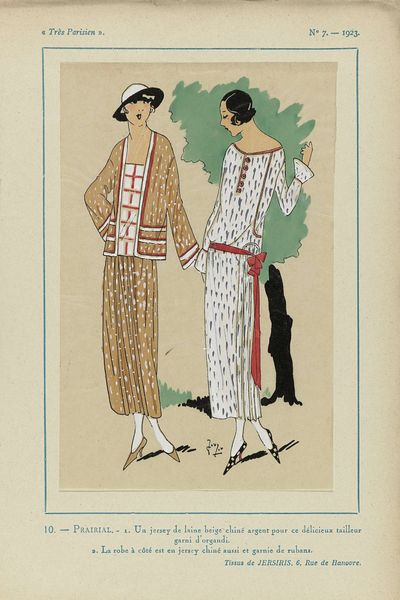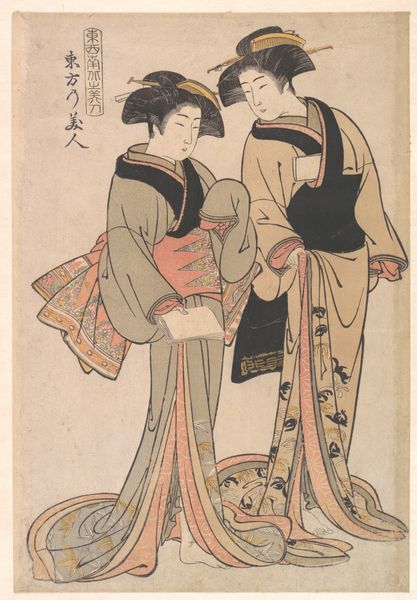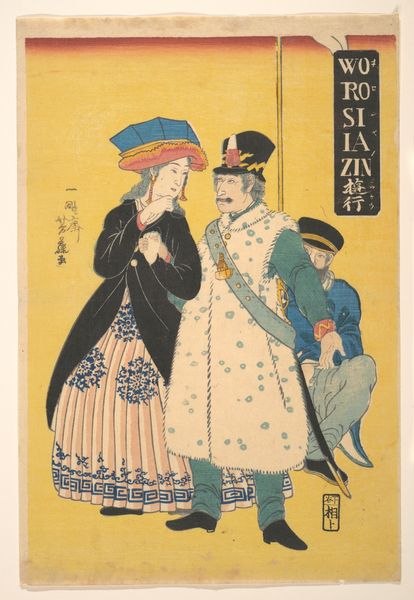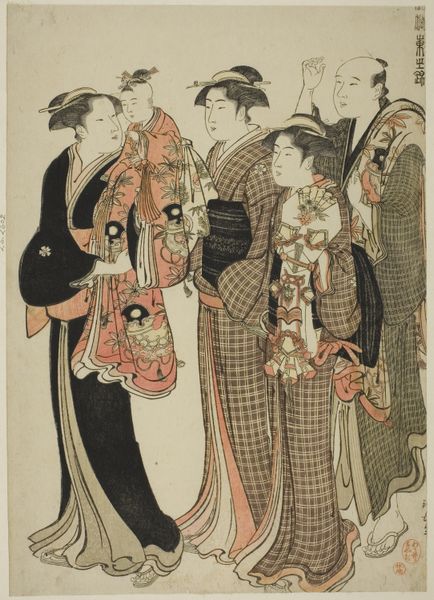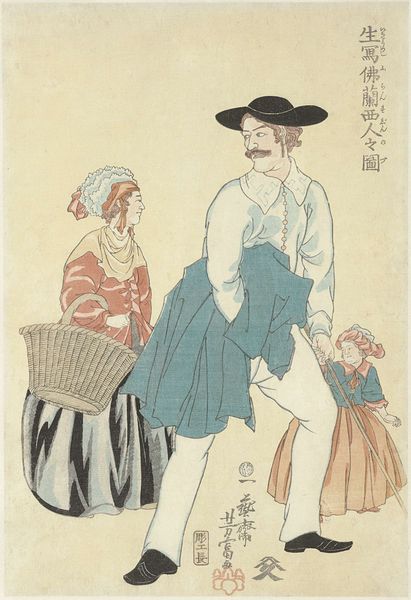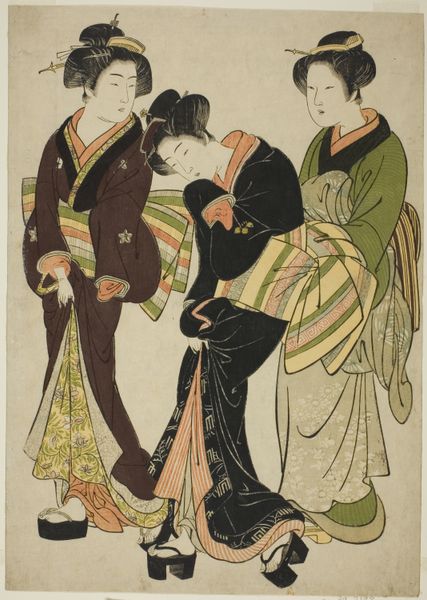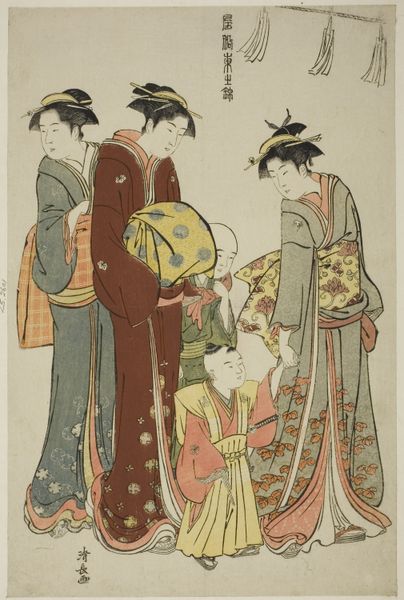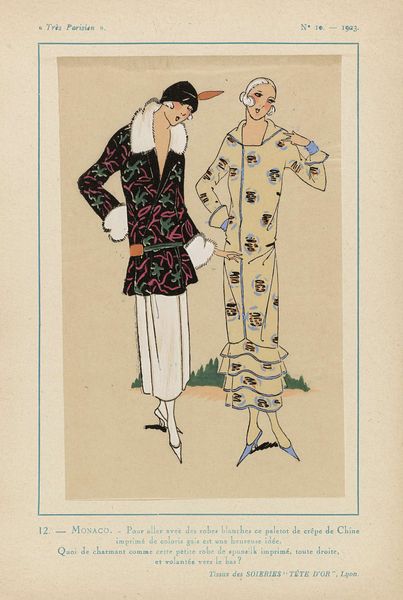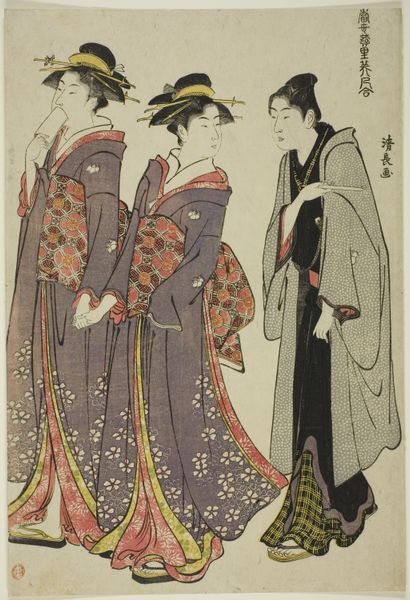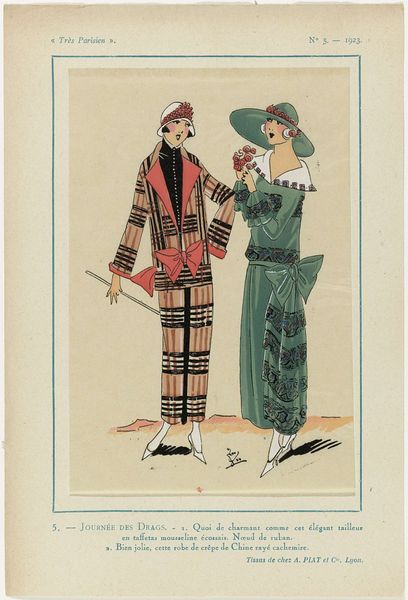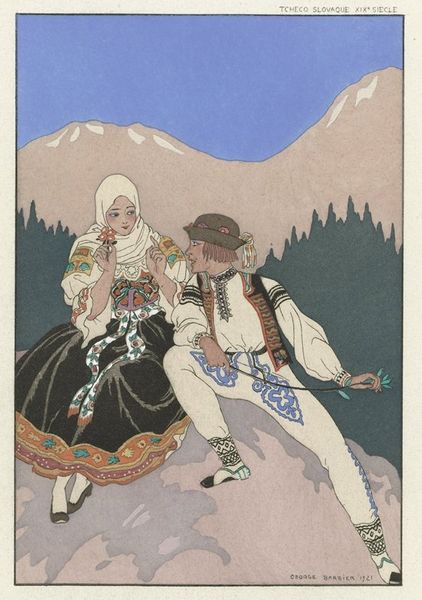
Copyright: Public Domain: Artvee
Curator: George Barbier's 1921 watercolor, "Le Coq du Village," offers a glimpse into rural life. It almost looks like a theater set with the colorful costumes. Editor: It strikes me immediately as whimsical. The soft, pastel colors lend a fairytale-like quality. Do you get that sense of nostalgia from the work? Curator: Absolutely. Barbier was deeply immersed in the romantic revival of folk traditions. This composition borrows so heavily from Slavic dress that it is specifically labelled as "Tcheco Slovaque, XIX siecle." The rooster in folk symbolism, of course, is strongly associated with Slavic art. What's fascinating is how he uses watercolors in such a decorative manner. Editor: Interesting—it's almost an ethnographic tableau vivant. I notice that the male figure is quite prominent; his feathered headdress, coupled with his flower offering, casts him as the "village rooster", puffed with masculine pride in this performance of courtship. Curator: Precisely, but even the folk-art tropes don't detract from the feeling of performance. The background feels intentionally minimal, almost flattened like stage scenery. Perhaps Barbier is not after faithful ethnography but an imagined performance. Editor: It brings to mind how frequently folklore is performed—and also re-interpreted over time. Are they romanticizing peasant culture, appropriating, or sincerely celebrating it? The line seems especially blurred when we look back now at works made by privileged classes. Curator: That tension is certainly palpable. We could delve deeply into postcolonial theory and representations of "the other" here. However, there’s no question about the influence of Art Nouveau on this style and these colors. Editor: This watercolor certainly offers us plenty to contemplate concerning representation and visual tradition. The longer I look, the less innocent and uncomplicated it seems. Curator: Agreed. While it invites the viewer in with its idyllic surface, it holds complexities about cultural appropriation. The symbols might appear innocent at first, but a closer reading prompts richer questions.
Comments
No comments
Be the first to comment and join the conversation on the ultimate creative platform.

